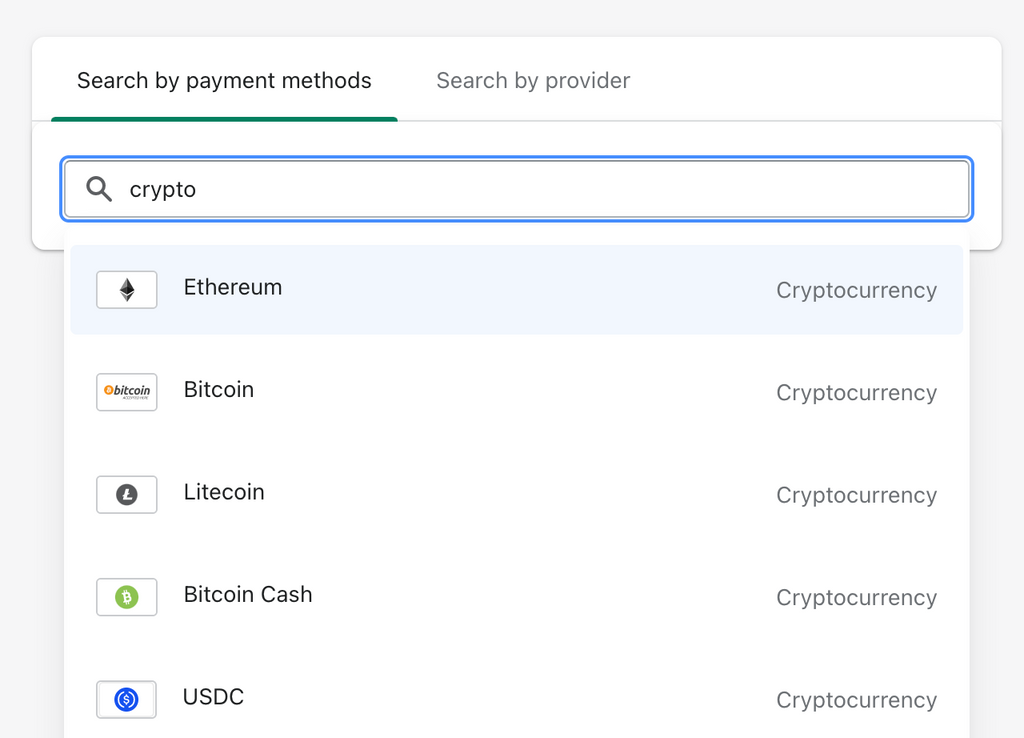How To Improve Your Ecommerce Store in 2024

In today's digital age, eCommerce has become essential for any business looking to reach and engage customers.
Here is what we are going to be talking about:
1. Increase the use of Artificial Intelligence (AI) and Machine Learning (ML)
2. Greater emphasis on sustainability and eco-friendly practices
3. Improve mobile commerce and use of mobile apps
4. Use of chatbots and other forms of automation in eCommerce
5. Use of social media and influencer marketing
6. Adopt new payment methods
7. Increase the use of video content
8. Create subscription-based models for recurring revenue streams
9. Adopt voice assistants and smart home devices
With the constantly evolving technology and customer expectations, it's crucial for eCommerce store owners to stay on top of the latest trends and best practices to improve their stores and boost sales in 2024.
Whether it's through the use of artificial intelligence, personalization, or mobile optimization, there are many strategies that eCommerce store owners can implement to improve their online presence and drive more sales.
1. Increase the use of Artificial Intelligence (AI) and Machine Learning (ML)
Artificial Intelligence (AI) and Machine Learning (ML) will be increasingly used by eCommerce businesses to personalize the customer experience and improve product recommendations.
One of the most significant ways AI and ML impact eCommerce is through their ability to personalize the customer experience using data such as purchase history, browsing behavior, and demographics.
This allows businesses to create unique shopping experiences for each customer and make personalized product recommendations, targeted promotions, and other personalized content.
💡Pro Tip: Improve your content with AI apps - ChatGPT.com or Copy.ai and update your store's content.

2. Greater emphasis on sustainability and eco-friendly practices
In recent years, there has been a growing awareness of the environmental impact of consumer purchases, and this trend is expected to continue in 2024.
As a result, there is a greater emphasis on sustainability and eco-friendly practices in eCommerce.
Consumers are becoming more conscious of the environmental impact of their purchases. They are increasingly looking for products and services that are produced sustainably and have a minimal environmental impact.
Businesses that want to succeed in eCommerce in 2024 will need to adapt to this trend and focus on sustainability and eco-friendly practices.
This can include using eco-friendly packaging, sourcing materials from sustainable suppliers, and using renewable energy to power their operations.
Additionally, businesses can consider offering repair, recycling, and trade-in options for their products to reduce their operations' environmental impact further.
By taking these steps, businesses can attract environmentally conscious consumers and contribute to reducing eCommerce's environmental impact.
💡Pro Tip: Create a page in your store about your sustainability and eco-friendly practices with videos and images.
Now is a good time to start if you don't have any sustainable or eco-friendly practices.
3. Improve mobile commerce and use of mobile apps
The continued growth of mobile commerce is one of the most significant trends in eCommerce in 2024.
With the increasing popularity of smartphones and tablets, more and more consumers are using their mobile devices to shop online.
In fact, mobile commerce is projected to account for over 70% of eCommerce sales by 2024.
This trend is driven by the convenience and accessibility of mobile shopping, as consumers can shop anytime, anywhere, and on the go.
To take advantage of this trend, businesses must ensure that their eCommerce websites are mobile-friendly and easy to navigate on smaller screens.
Additionally, businesses can develop mobile apps that make online shopping even more convenient and accessible. Mobile apps can provide features such as push notifications, easy checkout, and personalized product recommendations.
💡Pro Tip: Optimize all images by compressing the files on the eCommerce store , enhancing mobile shopping for customers.
Canva.com is a great tool to use to improve your images.

4. Use of chatbots and other forms of automation in eCommerce
In 2024, eCommerce businesses are expected to make greater use of chatbots and other forms of automation to improve customer service and support.
Chatbots are computer programs that simulate conversations with human users, answer questions, and provide information.
They can be integrated into a website or mobile app and are available 24/7 to assist customers with their inquiries.
They can also be programmed to provide specific information, such as product details, prices, and stock availability.
This can improve customer service and support, increasing satisfaction and sales.
Another form of automation that businesses can use to improve customer service and support is automated email and SMS responses.
This can help businesses respond to customer inquiries more quickly and efficiently, even when support staff is unavailable.
Businesses can also use automation to personalize customer interactions and provide personalized product recommendations.

💡Pro Tip: Implement an eCommerce inbox like the Shopify Inbox app that makes it easier to communicate with your customers from social platforms and the online store.
5. Use of social media and influencer marketing
Social media and influencer marketing are expected to play an increasingly important role in eCommerce in 2024.
Social media platforms like Instagram, Facebook, and TikTok have become important channels for businesses to connect with customers, promote their products and services, and build brand awareness.
Businesses can attract and retain customers, increase sales, and improve customer loyalty by creating engaging and relevant content.
Influencer marketing is another important strategy businesses can use to drive sales and build brand awareness.
By partnering with influencers, businesses can reach a wider audience and tap into influencers' trust and credibility with their followers.
Influencer marketing can be used to promote products, create brand awareness, and also to drive traffic to a business's website.

6. Adopt new payment methods
In 2024, eCommerce is expected to see the emergence of new payment methods, including digital wallets, cryptocurrency, and contactless payments.
Digital wallets, such as Apple Pay and Google Wallet, allow customers to make payments using their smartphones or other mobile devices. This can make online shopping more convenient and secure, as customers no longer need to manually enter their credit card information.

Cryptocurrency is also expected to become more mainstream in eCommerce in 2024. Cryptocurrencies like Bitcoin and Ethereum can be used to make secure and fast online payments, and their decentralized nature allows for greater security and privacy.
As cryptocurrency becomes more widely accepted and understood, it will become a more popular option for online payments.
Contactless payments, such as those made with a Near Field Communication (NFC) enabled device, are also becoming more popular in eCommerce.
This payment method allows customers to make payments by holding their devices close to a payment terminal, eliminating the need for cash or cards. This can make online shopping more convenient and fast, especially for in-store or curbside pickup orders.
💡Pro Tip: You can add additional payment options in Shopify Payments.

7. Increase the use of video content
In 2024, eCommerce businesses are expected to increase their use of video content to enhance the online shopping experience for customers.
One of the most significant ways video content is being used in eCommerce is through product videos, which allow customers to see a product in action and learn more about its features and benefits.
Product videos can showcase new products, demonstrate how a product works, or provide detailed information about a product's features.
Live streams are also expected to become more popular in eCommerce in 2024.
Live streams allow businesses to connect with customers in real time and provide a more immersive shopping experience.
Businesses can use live streams to showcase new products, provide behind-the-scenes access, or host Q&A sessions with customers.
Virtual tours are another way eCommerce businesses use video content to enhance the online shopping experience.
Virtual tours allow customers to see a product in a more realistic setting, such as in a living room or kitchen. This can give customers a better understanding of how a product will look in their home and help them make more informed purchasing decisions.
💡Pro Tip: Live streaming Shopify App - Reactive is a great way to bring in more customers and give them a virtual tour.

TOOLS for videos:
Are you doing Live Videos and Recording?
Here are some tools that I use in my Lives.
(Recommended by Compass Media - a great team)
8. Create subscription-based models for recurring revenue streams
In 2024, more eCommerce businesses are expected to adopt subscription-based models to create recurring revenue streams.
Subscription-based models involve customers paying a recurring fee, such as monthly or annual, for access to products or services. This model can be applied to a wide range of products and services, from physical goods, such as monthly boxes of snacks, to digital products, such as online courses or software.
One of the main benefits of a subscription-based model is that it allows businesses to create a predictable and stable revenue stream.
This can help businesses plan for the future and make more informed business decisions.
Additionally, subscription-based models can lead to increased customer loyalty and retention as customers are more likely to stick around when they have a recurring payment.
💡Pro Tip: Recharge is a Shopify subscription app , and there are other apps in the Shopify app store.

9. Adopt voice assistants and smart home devices
71% of consumers prefer to ask a voice search query rather than type.
And 66.3 million U.S. households are forecasted to own a smart speaker in 2022.
Voice assistants, such as Amazon's Alexa and Google Assistant, allow customers to make purchases and track orders using voice commands.
This can make online shopping more convenient for customers, as they don’t need to navigate through a website or mobile app manually.
Smart home devices, such as smart speakers and thermostats, can also be integrated with eCommerce platforms to make online shopping more convenient.
For example, customers can use their smart speaker to reorder items they have previously purchased or to add items to their shopping cart.
Smart home devices can also be used to track the status of an order, making it possible to know if a package has been delivered or is on its way.
💡Pro Tip: Unfortunately, there is not a tested Shopify app for this to integrate into your store.
But you can prepare for it - start using voice search keyword phrases. Here are some great tips by Search Engine Journal.



Leave a comment
Also in eCommerce Success Blog
What Successful Ecommerce Store Owners Need To Do Differently in 2025
By Veronica Jeans, Bestselling Author January 25, 2025
The Future of E-commerce - A paradigm shift for e-commerce in 2025!
Continue reading
9 Critical Mindset Shifts to Actually Make Money with Your Online Store in 2025
By Veronica Jeans, Ecommerce Queen January 01, 2025
(Disclaimer: this is not an article for the faint of heart - but for entrepreneurs that really want to improve ~ Veronica Jeans)
Continue reading
What is the difference between Shopify CSV and Matrixify Products import and export?
By Veronica Jeans, Bestselling Author November 16, 2024
Continue reading